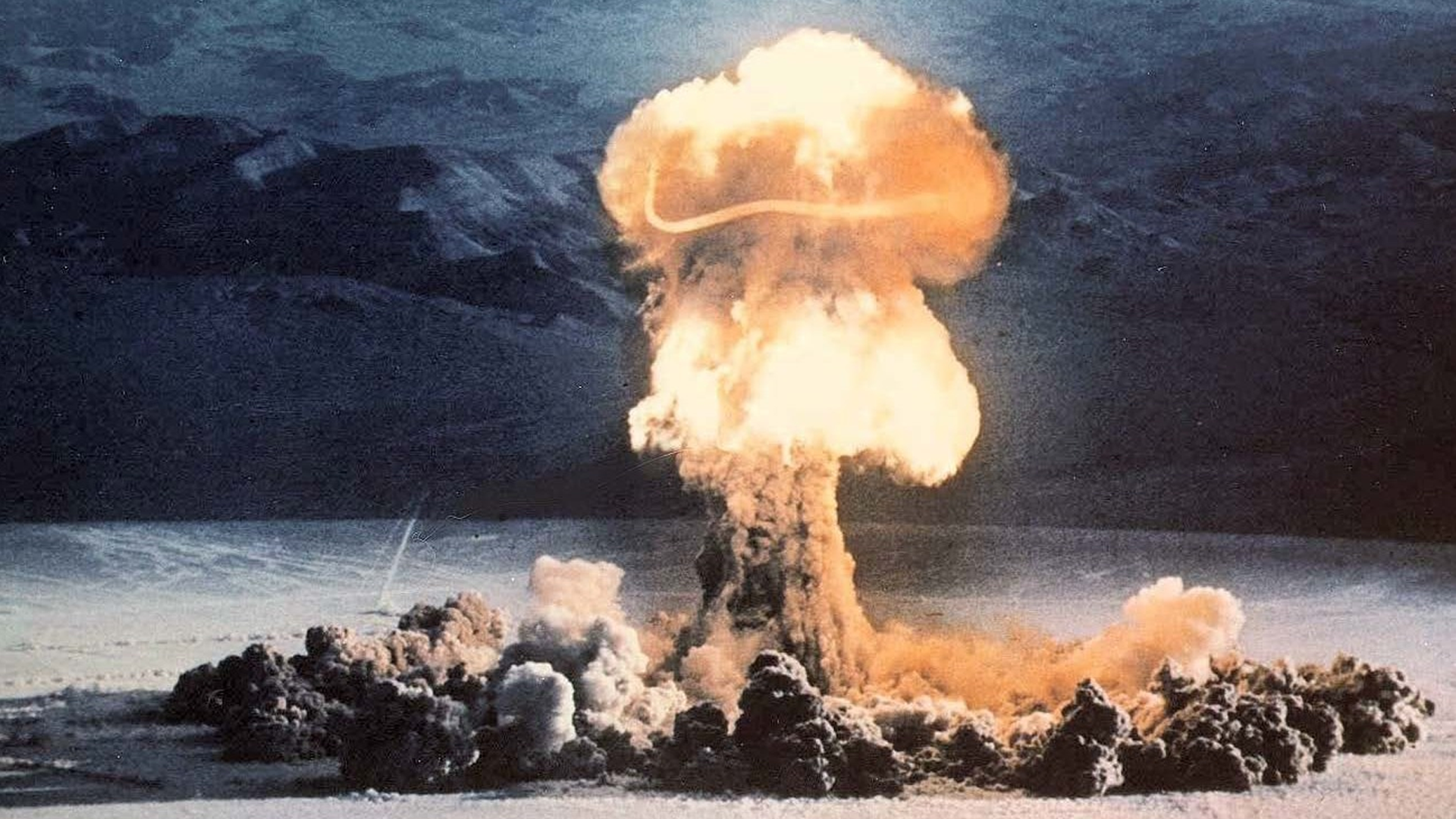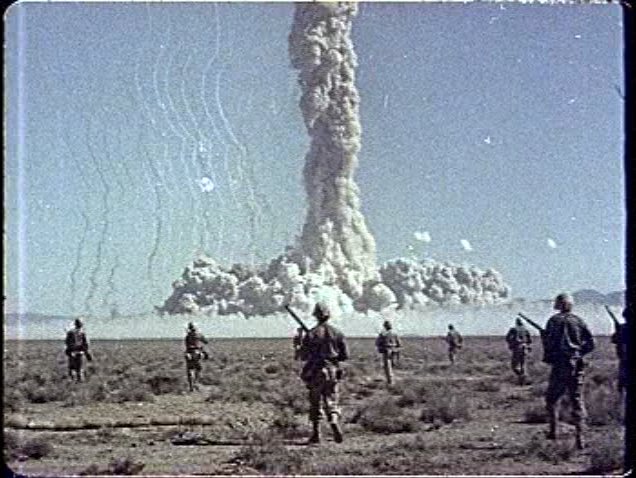Nevada Hosts First Underground Nuclear Test

When the U.S. detonated the Rainier test underground in Nevada, it marked a turning point in the nuclear age.
What Happened?
The Nevada desert became ground zero for the atomic age in 1957. Just 65 miles north of Las Vegas, the U.S. military dug tunnels into the earth to see if nuclear weapons could be tested without poisoning the skies.
On September 19, 1957, they set off 'Rainier,' a 1.7-kiloton blast buried deep underground. For the first time, no mushroom cloud rose, no radioactive dust rained down. Instead, the explosion was contained, recorded only by seismic instruments and shocked earth.
Rainier was one shot in Operation Plumbbob, a massive test series of 29 nuclear detonations between May and October 1957. These tests aimed to refine warhead designs, study safety measures, and explore how nuclear weapons might shape the Cold War battlefield.
The Cold War loomed large. America and the Soviet Union were locked in a race to build more powerful and flexible arsenals. Underground testing was not just science—it was strategy, a way to keep pushing the edge while reducing global outcry over radioactive fallout.
But not every test was underground. Plumbbob also unleashed radiation into the atmosphere—an estimated 58,000 kilocuries of radioiodine. Civilians and soldiers alike were exposed, often without their knowledge, leaving health consequences that surfaced years later.
Animals, too, were used. Over 1,200 pigs were placed in experiments to test the effects of heat, blast, and radiation on living tissue. While some survived, many suffered burns and injuries, a grim reminder of the human risks these weapons carried.
Thousands of U.S. troops took part in live maneuvers during nuclear blasts, practicing how to fight on a nuclear battlefield. Many were exposed to radiation, and later studies found higher rates of leukemia among these soldiers.
The success of Rainier proved underground tests were possible. Within a few years, underground detonations would become the norm, especially after the 1963 Limited Test Ban Treaty barred testing in the atmosphere, space, and oceans.
From 1951 to 1992, nearly 1,000 nuclear tests took place at the Nevada site, shaping U.S. weapons policy while exposing generations of people to hidden dangers. Rainier was a technical milestone, but it was built on human and environmental costs.
Today, the Rainier test reminds us of both innovation and hubris—how far science can push boundaries, and how vital it is to question what those breakthroughs mean for people and the planet.
Why It Matters
Rainier was more than an explosion in a tunnel. It marked the start of underground nuclear testing, a shift that reduced visible fallout but kept the arms race roaring. It highlights the tension between scientific progress, military ambition, and human safety—a balance we’re still struggling with in today’s nuclear world.
?
Why did the U.S. begin experimenting with underground nuclear tests in the 1950s?
How did Operation Plumbbob affect civilians, soldiers, and animals involved in the experiments?
What role did the Cold War play in driving nuclear weapons research and testing?
How did the Limited Test Ban Treaty of 1963 change the way nuclear tests were conducted?
What lessons from Operation Plumbbob still matter today when discussing nuclear safety and ethics?
Dig Deeper
How nuclear weapons were developed and tested, and the story of the most destructive technology humans have ever created.
Related

McCarthyism: Fear, Power, and the Red Scare
In the 1950s, fear of communism gripped America. Senator Joseph McCarthy fueled this fear by accusing hundreds of people of being communist traitors—often without proof. The result was a national panic that tested the meaning of truth, justice, and freedom.

American Revolutionary War: From Protest to a New Nation
How arguments over taxes and rights grew into an eight-year war—and how ideas, allies, and perseverance turned thirteen colonies into the United States.

The 13 Colonies: Seeds of a New Nation
How did thirteen scattered colonies along the Atlantic coast grow into the foundation of a new nation?
Further Reading
Stay curious!
